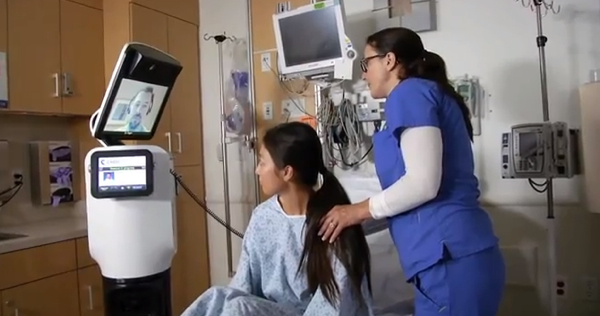Calling Dr. Robot

These mobile machines stand at about five feet tall, and weigh around 200 pounds. They project a doctor’s face on a large screen and use a combination of cameras, speakers, and microphones to allow physicians to see and speak to their patients. Using a joystick and the Internet, doctors can check on patients in other buildings, other cities, other states, and even other countries!
The pricing of these robots varies. Some cost about $150,000 per device, while others can be leased for about $3,000 a month. Prices seem to mostly depend on the brand and the payment plan.
Watch BBC discuss these new machines here.
Dignity Health was one of the first sets of hospitals to begin using these machines. They started using them five years ago to diagnose patients expected to suffer from strokes. Now, about 1,000 hospitals around the world have installed InTouch telemedicine devices, which have been used in areas such as neurology, pediatrics, mental health, cardiology, and neonatology.
Though some doctors remain skeptical about the use of robots for patient car, these devices seem to have a great impact in patient health.
A chart-review study that appeared in an issue of the Journal of the American College of Surgeons showed that a quarter of a doctor’s patients had shorter hospitals stays after experiencing robotic visits.
The obvious technological downside is that doctors who use these devices can not touch their patients to check for body temperature changes or pain.
Similar teleconference robots have been used at John Hopkins to address the issue of language barriers. These robots have a built-in translator so that doctors can still communicate with their patients, even if there is a language barrier.
Roughly 120 of these machines are used in hospitals worldwide, but doctors expect this number to increase, since these devices could address the problem of a shortage of health care professionals in remote locations.
Reach Staff Reporter Janelle Cabuco here.



